Gigabyte R181-2A0 Performance
For this exercise, we are using our legacy Linux-Bench scripts which help us see cross-platform “least common denominator” results we have been using for years as well as several results from our updated Linux-Bench2 scripts. Starting with our 2nd Generation Intel Xeon Scalable benchmarks, we are adding a number of our workload testing features to the mix as the next evolution of our platform.
At this point, our benchmarking sessions take days to run and we are generating well over a thousand data points. We are also running workloads for software companies that want to see how their software works on the latest hardware. As a result, this is a small sample of the data we are collecting and can share publicly. Our position is always that we are happy to provide some free data but we also have services to let companies run their own workloads in our lab, such as with our DemoEval service. What we do provide is an extremely controlled environment where we know every step is exactly the same and each run is done in a real-world data center, not a test bench.
We are going to show off a few results, and highlight a number of interesting data points in this article.
Python Linux 4.4.2 Kernel Compile Benchmark
This is one of the most requested benchmarks for STH over the past few years. The task was simple, we have a standard configuration file, the Linux 4.4.2 kernel from kernel.org, and make the standard auto-generated configuration utilizing every thread in the system. We are expressing results in terms of compiles per hour to make the results easier to read:
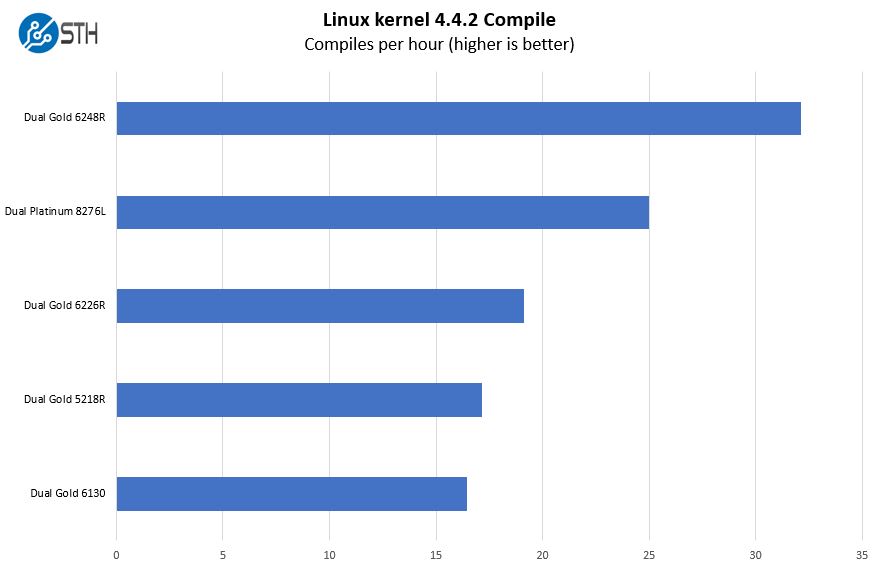
Here we wanted to highlight a few of the new 2nd Gen Intel Xeon Scalable Refresh SKUs along with some of the older generation parts.
c-ray 1.1 Performance
We have been using c-ray for our performance testing for years now. It is a ray tracing benchmark that is extremely popular to show differences in processors under multi-threaded workloads. We are going to use our 8K results which work well at this end of the performance spectrum.
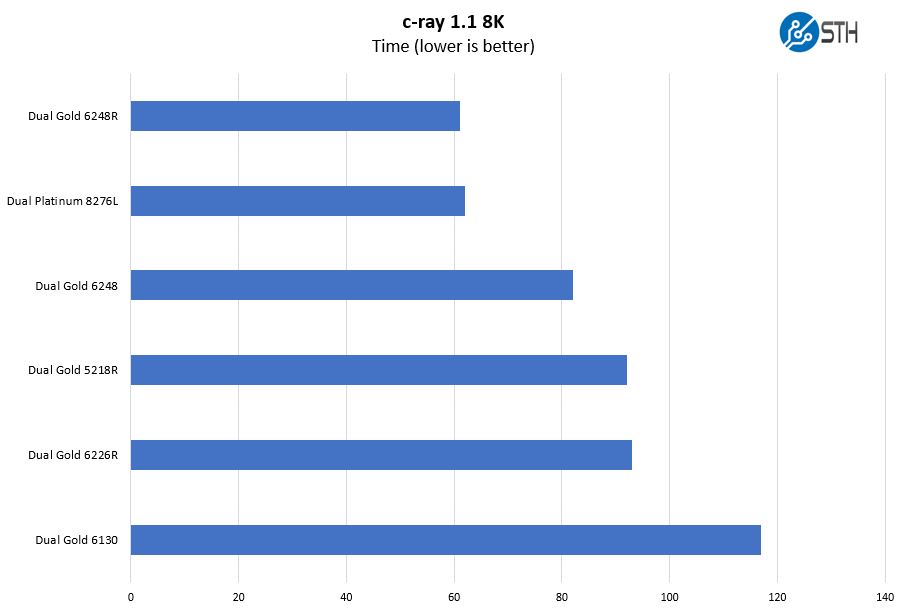
For this server, the new “R” SKUs make a lot of sense given their better performance per dollar than the older models.
7-zip Compression Performance
7-zip is a widely used compression/ decompression program that works cross-platform. We started using the program during our early days with Windows testing. It is now part of Linux-Bench.
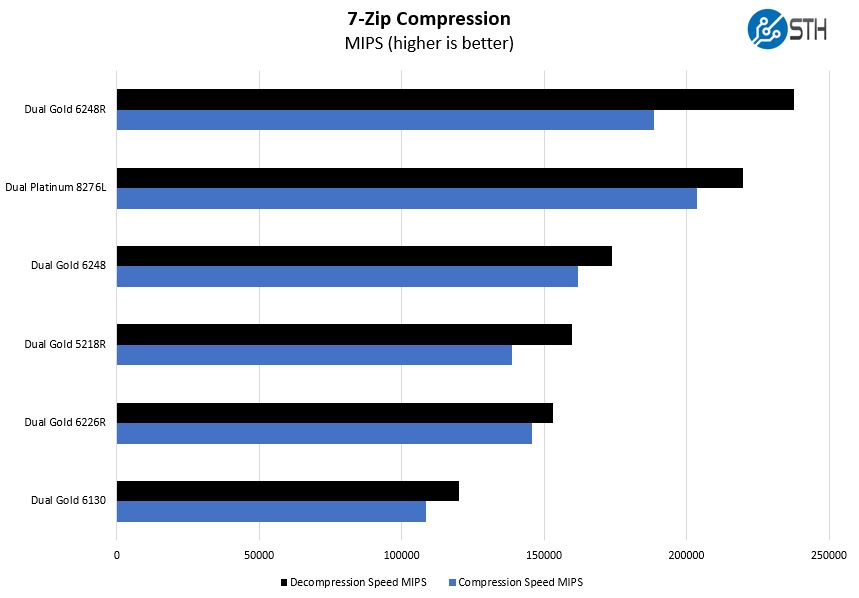
Compression is a big deal, and one great use case can be compressing data to store as much data into Optane DCPMMs in app direct mode. The new Xeon “R” SKUs, even the Gold 52xxR and some of the Silver 42xxR SKUs support DCPMMs so having fast storage in the R181-2A0 is now less costly than it had been.
NAMD Performance
NAMD is a molecular modeling benchmark developed by the Theoretical and Computational Biophysics Group in the Beckman Institute for Advanced Science and Technology at the University of Illinois at Urbana-Champaign. More information on the benchmark can be found here. With GROMACS we have been working hard to support AVX-512 and AVX2 supporting AMD Zen architecture. Here are the comparison results for the legacy data set:
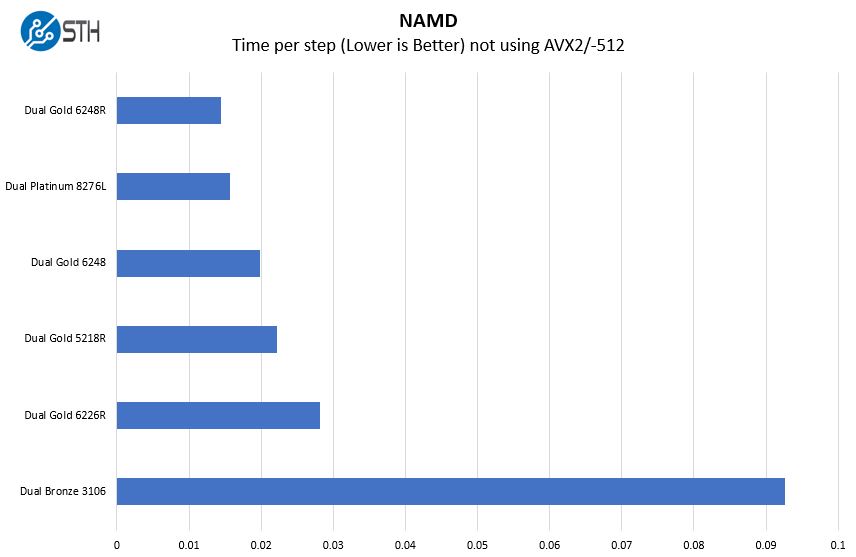
The newer chips are 2x UPI link designs which pairs with the two available in the R181-2A0. There are some designs that have three UPI links, primarily for systems designed to have a lot of PCIe traffic crossing sockets. Those require the older Xeon CPUs. We see the R181-2A0 as catering to the sweet spot of the market or the ~80% of the market which makes it a mainstream platform.
OpenSSL Performance
OpenSSL is widely used to secure communications between servers. This is an important protocol in many server stacks. We first look at our sign tests:
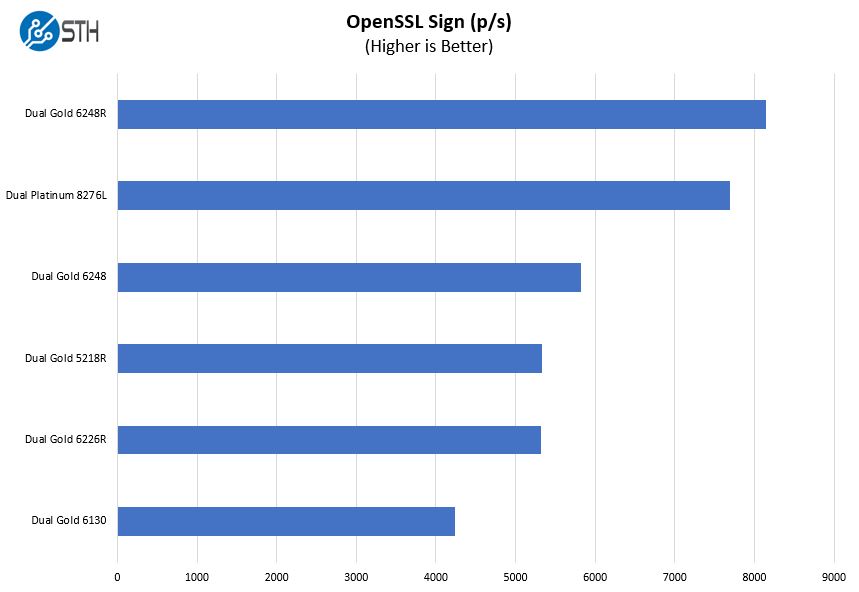
Here are the verify results:
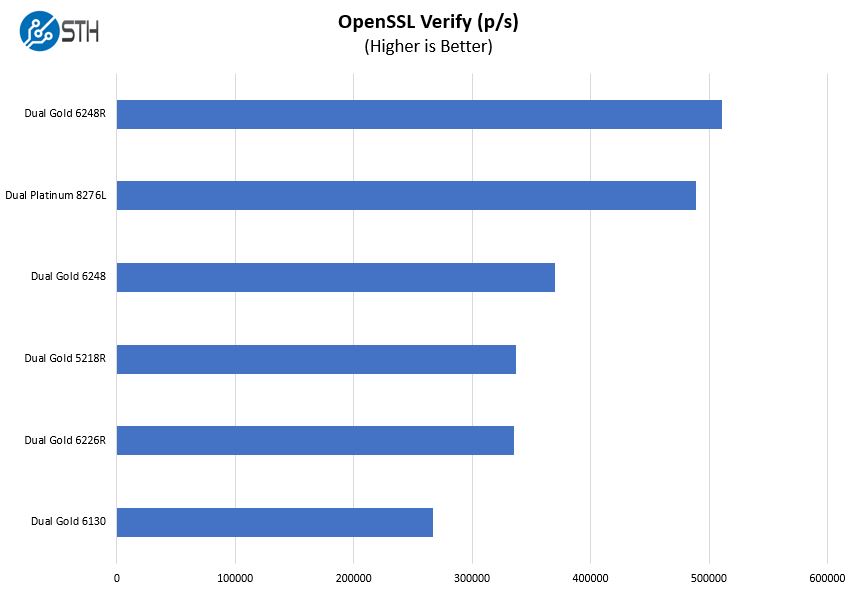
OpenSSL is a foundational web technology. Here, the new chips perform extremely well but we wanted to point out, again, that Intel does not necessarily correlate performance to model number increments. For example, the Intel Xeon Gold 5218R has 20 lower frequency cores while the Xeon Gold 6226R has 16 higher frequency cores. Here, they perform relatively close.
UnixBench Dhrystone 2 and Whetstone Benchmarks
Some of the longest-running tests at STH are the venerable UnixBench 5.1.3 Dhrystone 2 and Whetstone results. They are certainly aging, however, we constantly get requests for them, and many angry notes when we leave them out. UnixBench is widely used so we are including it in this data set. Here are the Dhrystone 2 results:
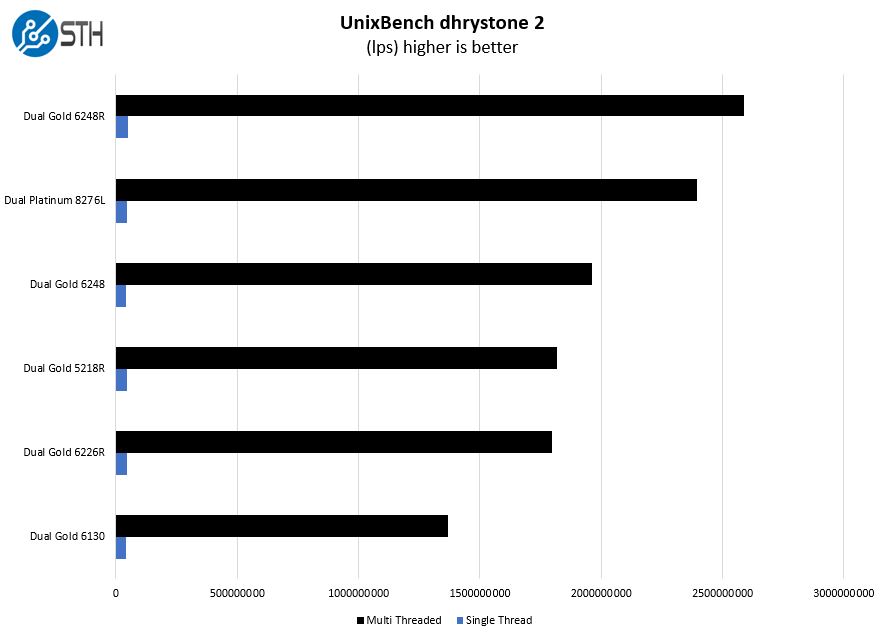
Here are the whetstone results:
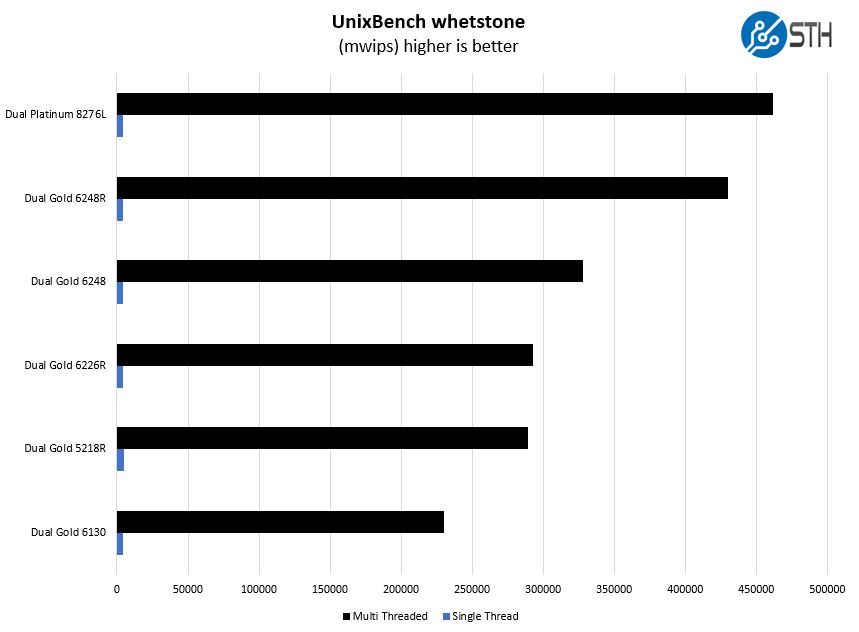
One item to keep in mind, and we did not get to test the processors on this platform due to timing, but a good reason to purchase the non-R SKUs is to get frequency optimized parts such as the Intel Xeon Gold 6250. The R181-2A0 has the thermal headroom to keep frequencies high.
Chess Benchmarking
Chess is an interesting use case since it has almost unlimited complexity. Over the years, we have received a number of requests to bring back chess benchmarking. We have been profiling systems and are ready to start sharing results:
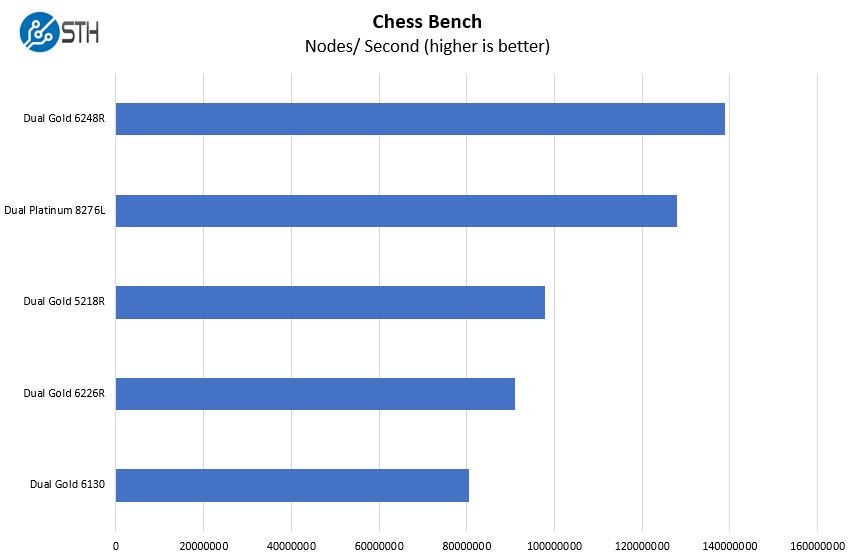
On the chess benchmarking side, we see something very similar to what we have seen in other tests.
GROMACS STH Small AVX2/ AVX-512 Enabled
We have a small GROMACS molecule simulation we previewed in the first AMD EPYC 7601 Linux benchmarks piece. We are not publishing results of the newer revision here since they are not compatible with our previous results.
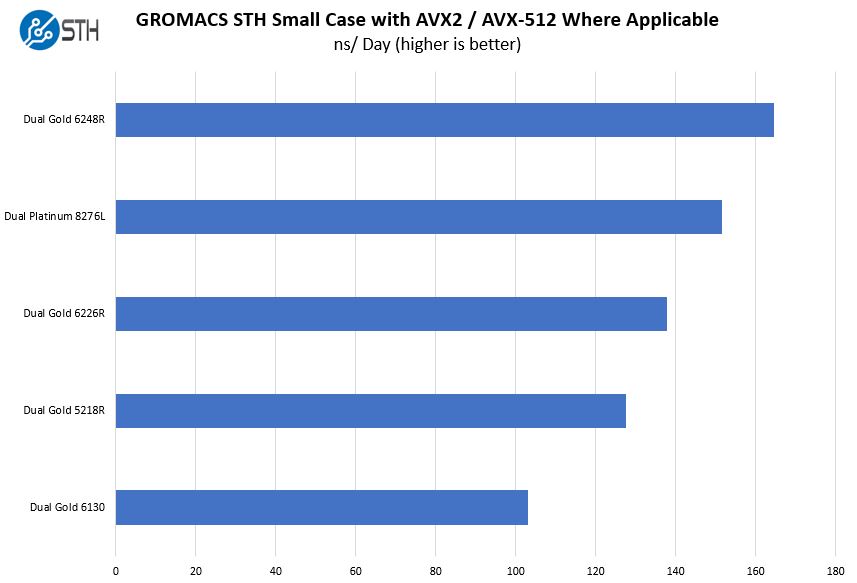
When Intel did the 2020 Xeon Scalable refresh, it often increased TDP headroom. That allows 24-core Xeon Gold 6248 CPUs to handily out-perform 28-core CPUs like the Xeon Platinum 8276L on tests like this. Not all servers are designed to handle 205W TDP CPUs. The heatsinks and fans used in the R181-2A0 are up to the challenge and can keep even hotter CPUs like the dual Gold 6248R’s cool in operation.
STH STFB KVM Virtualization Testing
One of the other workloads we wanted to share is from one of our DemoEval customers. We have permission to publish the results, but the application itself being tested is closed source. This is a KVM virtualization-based workload where our client is testing how many VMs it can have online at a given time while completing work under the target SLA. Each VM is a self-contained worker.
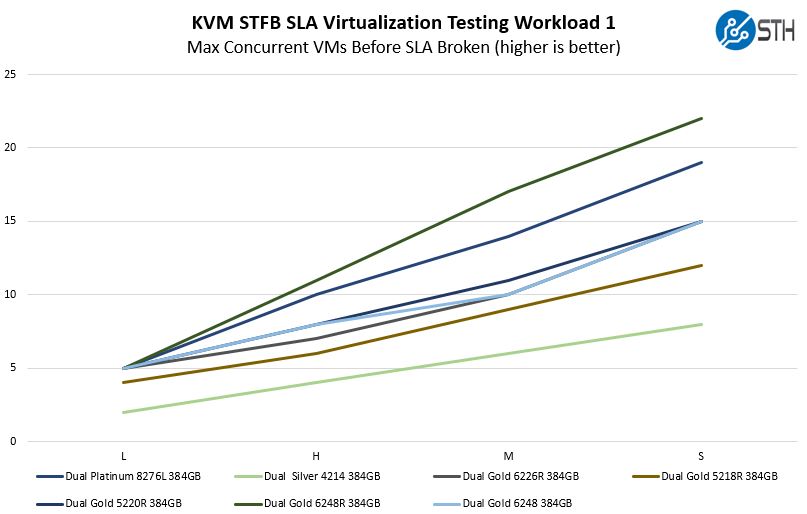
We just wanted to show a few configurations to show some of the range of performance one gets using the 2nd generation Intel Xeon Scalable family in the R181-2A0 as a virtualization platform.
Next, we are going to cover power consumption before getting to the STH Server Spider and our final words.




I would LOVE to see the whitebox OEM version of the hardware setup guide that is pasted inside this chassis.
The mis-spellings, sentence structure & syntax, and translation (from whatever to English) errors could be hillarious reading!
Sleepy, your mistaken here. HPe take these systems and market them as their own. The quality and translation is brilliant